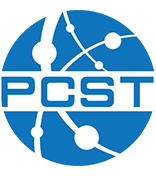Science camps overlooked: A 50-year old science communication practice
Author: Hannah Dalgleish – University of Oxford, United Kingdom
Co-authors:
- Nora Mórocza – Liverpool John Moores University, United Kingdom
Science camps emerged ~50 years ago in Europe, as a new way of communicating science to younger people. One such example is the International Astronomical Youth Camp (IAYC), which was founded in 1969 and is the focus of this work.
Our research explores the perceived benefits and potential long-term influences of attending the IAYC. 307 participants (181 male, 119 female, aged 16-79) completed a survey consisting of a number of multiple choice and open-ended questions. Quantitative analysis has shown that 68.4% of IAYCers are currently studying or working in STEM-related fields (Dalgleish & Veitch-Michaelis, accepted).
To probe further, new research on the qualitative data suggests that camp attendance has a substantial long-term impact on professional life. Respondents emphasised that the camp influenced a more informed career choice — predominantly in science and technology — and opened up professional opportunities by building solid networks with peers. Additionally, the IAYC’s international nature promoted a “global citizen identity” by: 1) encouraging participants to seek careers in international environments, 2) fostering acceptance and interest in other cultures and minority groups, and 3) providing confidence to live and study abroad. Many participants also reported increased self-esteem, self-awareness, acceptance towards self and others, and social inclusion.
Although science camps have become increasingly common practice across the globe, research on this topic remains limited (Lindner et al. 2014). Through comparisons to other formats like science museums and festivals, we find that science camps reach fewer people, but the intensity and prolonged experience of a camp has longer lasting effects and appears to influence future lives and careers more significantly. On the other hand, the IAYC seems to suffer from the same challenges as other practices, namely lack of diversity: such activities typically attract those with higher science capital and socioeconomic status.
The author has not yet submitted a copy of the full paper.
Presentation type: Individual paper
Theme: Time
